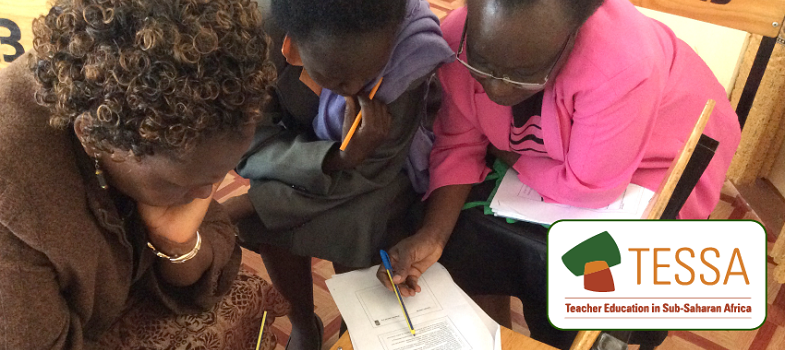3. Writing stories
Research suggests that people learn best when what is being taught is relevant to them. As a teacher, you constantly need to make sure that your pupils are gaining knowledge that will help them make sense of their world.
You and your class have researched why people tell stories, and looked at the meanings of particular stories. Now we look at how you can help your pupils apply storytelling to real-life situations and difficulties.
Case Study 3: Writing a story
Mrs Alitwala wanted to help her pupils in her Primary 5 class in Kampala to write their own stories in pairs. She wrote a list of possible story features (see below) on the chalkboard and discussed with her pupils how these can determine what kind of story is written.
- Animals representing humans
- Marvellous events, unusual creatures
- Someone getting into difficulties and finding a way out
- Good and evil
- Explanations for the way things are
She also gave them a list of events, good and bad, that had happened in the city recently and suggested they use one of these as the context of their story. Next, she asked them to choose whether the characters in their story would be animals or people. Finally, she asked what theme they might choose, such as the battle between good and evil. Once they had decided, she encouraged each pair to start writing.
Over the next week or two, Mrs Alitwala asked each pair to share their story with the rest of the class who then discussed what the story’s purpose was. She was very pleased with the variety of the stories.
Key Activity: Creating an original story
Ask pupils to think of problems in their families, school and community that come out of the way people behave towards one another. The problems might range from everyday ones, like laziness, to serious issues, such as HIV/AIDS, step-families, poverty, parents neglecting their roles, drunkenness. You might prompt them by describing familiar situations involving certain kinds of behaviour, but be sensitive to the situations of individual pupils in your class. You could use old newspapers and magazines to help with ideas for stories.
- Each group should choose one problem to create a story that shows the effects of this kind of behaviour and offers some wisdom about it.
- Discuss some of the features of stories before they write their story or plan how they will tell it (see Case Study 3).
- Ask each group to tell their story to the class. Discuss the purpose of each story, list these, and compare them with their research findings from Activity 1.
- Let group members decide for themselves whether their story was successful, and why. (See questions in Resource 6: Assessing your story.)
How well did they assess themselves?
Do you agree with their assessment?
If you have younger pupils, you may want to do this as a whole-class activity where you write their ideas on the board or on paper.
2. Thinking about the purpose of a story



